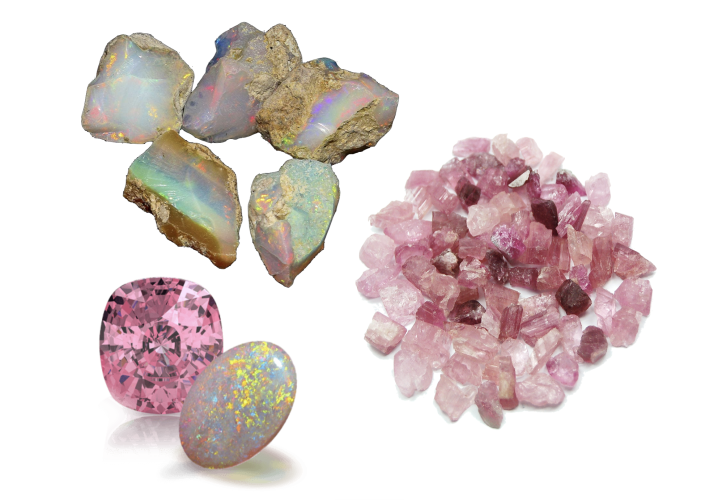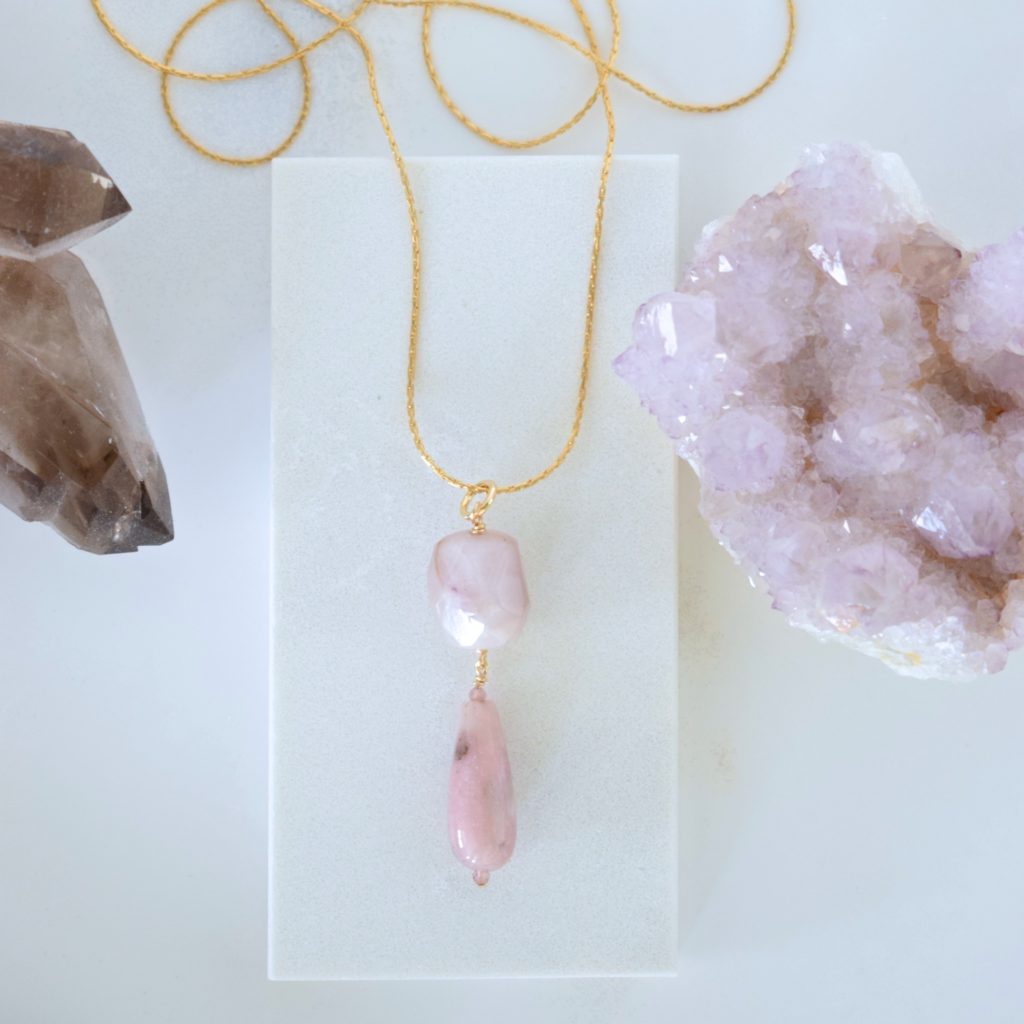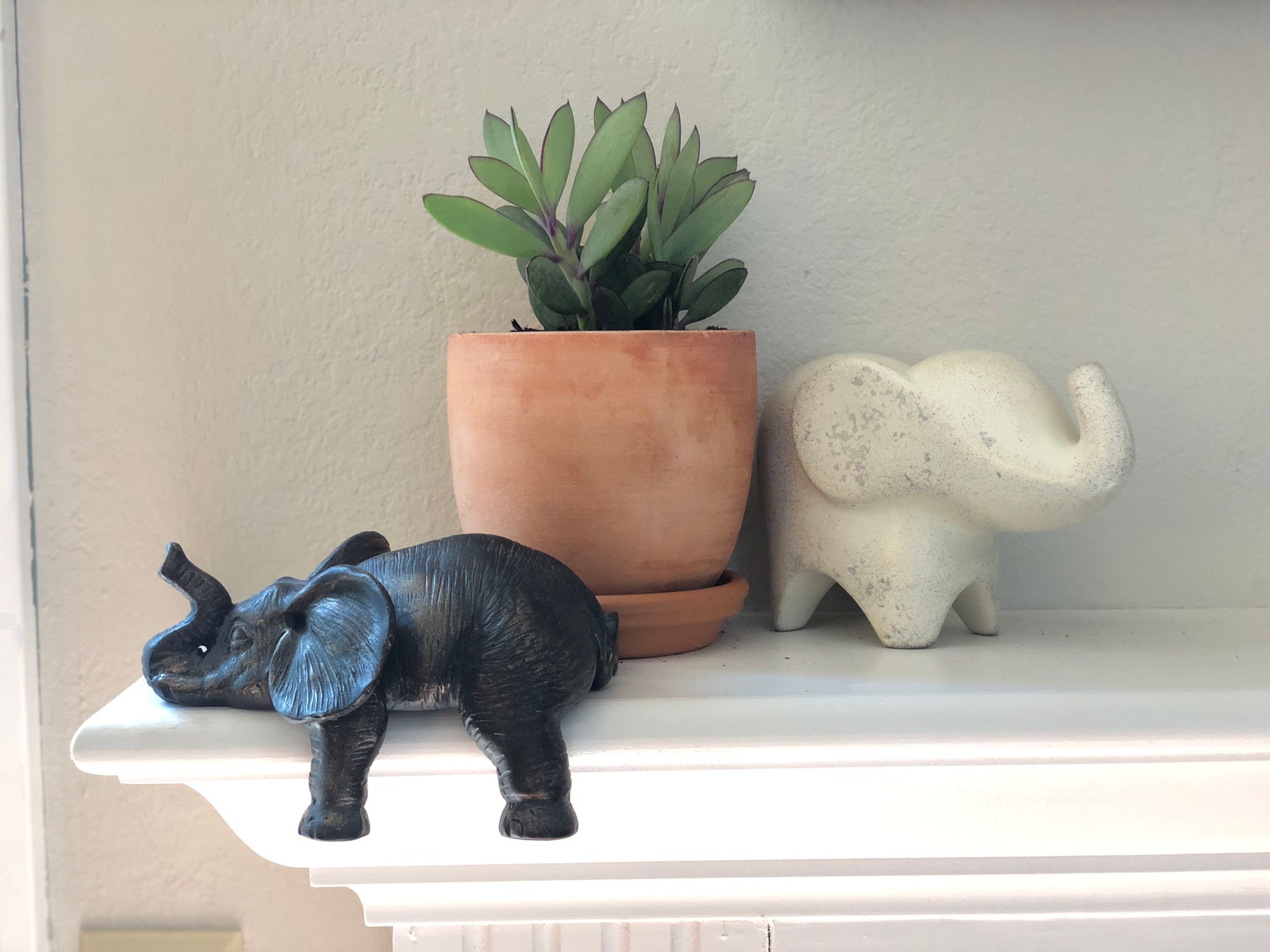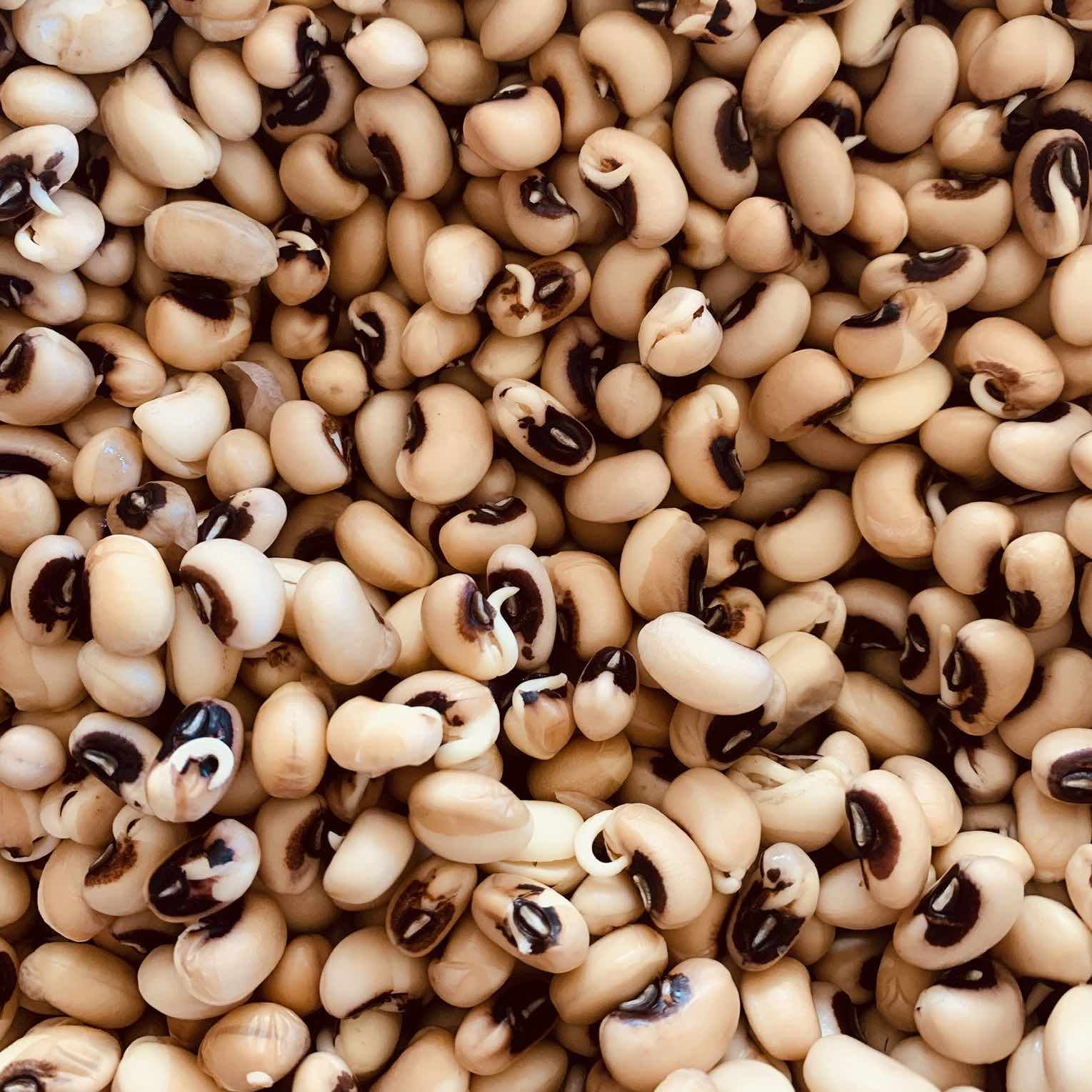October babies, you get two birthstones to call your own! Both opal and pink tourmaline are gemstones associated with those born in October.
Opal is well-known for its colorful effects, and, while the pink variety of tourmaline is assigned to October, tourmaline in general comes in a full spectrum of beautiful colors, some exhibiting multiple colors in the same stone.
Opal
The name “opal” originally comes from the Sanskrit word upala, meaning “precious stone” or “jewel,” with a later Greek derivative opallios, meaning “to see a change of color.” Opal is a fairly-soft, non-crystalline gemstone, composed of hardened silica gel, that can contain up to 30 percent water. They come in at between 5.5 to 6.5 on the Mohs hardness scale, making them easy to scratch.
The “common opal” is somewhat soft, translucent or opaque, and forms in a variety of colors, such as pink, blue, green, and white. “Precious opals” are richly opalescent, with flashes of color that seem to float or dance typically against white, black, or brown backdrops. In a similar category, “fire opals” are usually yellow to red-orange and have vibrant, alluring displays of neon “fire” within them. Most precious opals found today are mined in Australia and Ethiopia.
Ancient Greeks were so entranced with the gemstone, it was thought to give people the gift of prophecy. In Indian mythology, the virgin Goddess of the Rainbow, who was being chased by suitors Brahma, Vishnu, and Shiva, was turned into an opal by her Mother Goddess.
Opal has long been associated with love and passion, as well as desire and seduction. It stimulates or “sparks” creativity and originality, and amplifies the traits and emotional state of the wearer, bringing them to the surface for examination and transformation. It is a stone of purification, helpful for clearing the emotional body and the aura, as well as boosting the will to live fully and embrace life.
Pink Tourmaline
Fairly new to gemological classification, tourmaline was first discovered by Dutch traders off the West coast of Italy in the late 1600s or early 1700s. As with many gems, in early times they were mistaken for other gemstones, and darker varieties were even thought to be rubies. They can now be properly identified on every continent, with one extremely productive rubellite mine, called the Himalaya Tourmaline Mine, located in San Diego, California.
Tourmaline is a complex mineral with a trigonal system crystal structure and is the only mineral with three sides – similar to a prism. This is evident when viewing a cross-section, such as that of a watermelon tourmaline slice, which, as the name suggests, has an outer band of green tourmaline with pink tourmaline at its center. Tourmalines are relatively high on the Mohs hardness scale, rating between 7 to 7.5 out of 10. Rather interestingly, they have an electrical charge when heated, which causes them to become polarized and gives them an ability to act like a magnet, attracting light objects.
A popular stone with ancient Chinese artisans, intricately hand-carved and engraved pink tourmaline figures and even small bottles have endured for centuries. In modern times, however, the gem is highly valued by both alchemists and technology savants alike for its unique pyroelectric qualities.
Similar to opal, pink tourmaline is a stone of love and compassion, resonating primarily with the heart chakra. It is a stone of emotional support and sympathy toward others, and is excellent for healers and counselors. As a “receptive stone,” it has the effect of soothing, calming, and going inward, and is great for promoting meditation and reconciliation. Also similar to opal, pink tourmaline helps with cleansing the emotional body and enhancing receptivity to healing energies.
Enjoy a special offer for Breathe Together readers: 10% off all Indriya Jewelry purchases with the code BREATHELOVE – check out the selection of October Birthstone pieces now!















